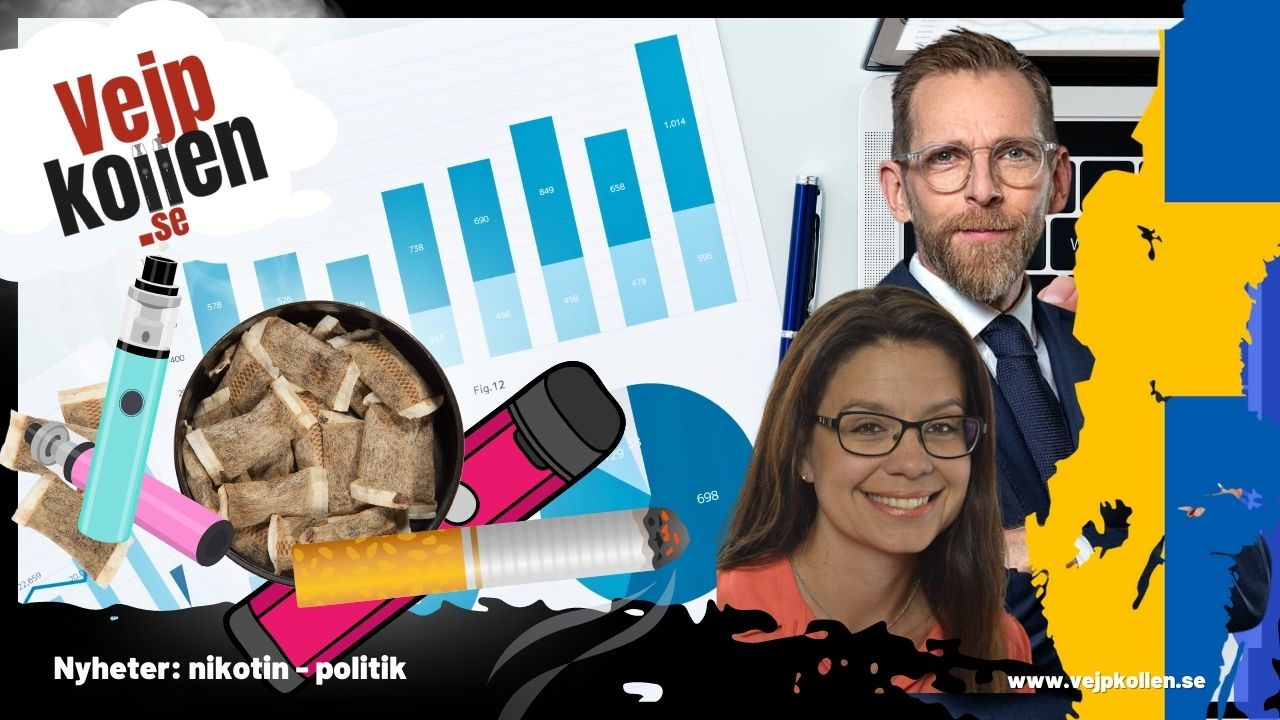The Public Health Agency of Sweden and other investigating bodies must clearly present the relative risks between different nicotine products. This is clear after Minister of Social Affairs Jakob Forssmed (kd) changed and clarified the task of investigating the harmful effects of nicotine use in Sweden.
The government and Minister of Social Affairs Jacob Forssmed are now clarifying the importance of emphasising the relative risks between different nicotine products in the national policy. study preceding the next ANDTS strategy. The announcement came after a Member of Parliament Helena Lindahl (c) urged the Minister for Social Affairs to review the remit of the Public Health Agency of Sweden. The inquiry, set up by the previous government, was only to report on the risks and harmful effects of different nicotine products, without comparing them with each other.
"The current investigation would only confirm what we already know and would not lead to a change in the objective of tobacco policy. Currently, the Swedish tobacco policy goal is to reduce all tobacco consumption. The Swedish Parliament decided in 2021 to change that goal. We believe that a more reasonable goal is to reduce the harmful effects of consumption." writes Helena Lindahl i a question to the Minister of Social Affairs in Parliament.
Already known data
Helena Lindahl also emphasised the importance of an evidence-based assessment of relative risks. She argues that this is not only a prerequisite for a change in tobacco policy. but also valuable for smokers to know.
"The adverse effects of various tobacco and nicotine products are already well documented and known. The interest of an existing smoker (who is likely to be aware of the health hazards of smoking) may of course be to stop smoking, but the relative health benefit may also lie in switching to a less harmful nicotine product" writes Helena Lindahl.
Changing the mission - clearer perspective
Minister of Social Affairs Jacob Forssmed has now reacted and given new directives to the investigating authorities. By no later than 30 June 2023 the Ministry of Social Affairs wants to know which differences in the harmful effects and risks associated with the use of different nicotine products. At the same time, the Minister of Social Affairs wants to clarify the importance of a harm minimisation perspective in the investigation.
"The Government has decided to change the assignment to the Public Health Agency of Sweden, the National Board of Health and Welfare and the Swedish National Board for Medical and Social Evaluation to compile and make available knowledge about the harmful effects of various tobacco and nicotine products. The change means that the authorities must provide a description of the harmful effects of different products in relation to each other based on knowledge that is scientifically based", writes the Government. Jakob Forssmed in its reply to Helena Lindahl.
Similar investigations in other countries
Similar studies have already been carried out in other countries. The most comprehensive one was conducted in the UK, where the Public Health Agency has been actively working on harm minimisation for smokers for 10 years. The New Zealand authorities also use harm minimisation to reduce the risks of cigarette smoking in the country. In both cases, e-cigarettes have been the main tool for harm reduction. In addition to e-cigarettes, snus and nicotine pouches will also be included in the Swedish study.
Different views on nicotine products
The Swedish investigation was preceded by a intense debate in parliament on the Social Democratic government's 5-year strategy to tackle the use of alcohol, drugs, doping, tobacco and gambling, collectively known as ANDTS. The S-Government did not want to differentiate between different nicotine products, but had the goal of reducing the use of all these products. This did not please a majority in the Riksdag who felt that the use of snus and e-cigarettes, for example, does not have the same harmful effects as smoking and should therefore not be equated.
The role of the Public Health Agency
The Swedish Public Health Agency, which is one of three bodies tasked with investigating the risks of different nicotine products, annually pays out 6 million SEK to organisations that want to openly counter the spread of the products.




